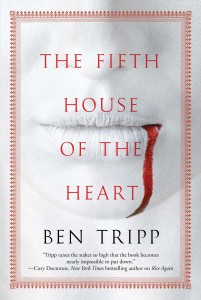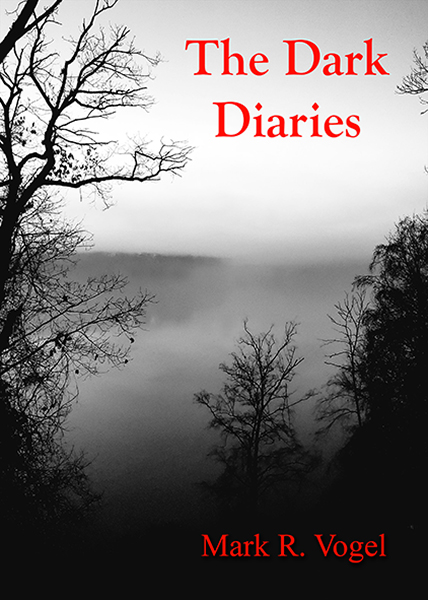
Ben Tripp
Gallery/Simon & Schuster
2015
Reviewed by Michael R. Collings
Veteran antiques dealer Asmodeus Saxon-Tang—widely known simply as Sax—is just stubborn enough not to allow the mysterious woman to outbid him on an ormolu clock; in fact, he is willing to raise the bid several thousands more than the item is worth. As he does so, he understands that he is borrowing trouble. He does not know this woman…and he knows all of the main dealers. He does not know whom she represents…and he knows all of the main collectors. He knows the secret history of the clock, but even knowing that cannot justify the price he pays for it. There is only one possible reason why anyone—other than himself—would bid that high. When the clock is stolen from his warehouse, his night-watchman killed, and nothing else in his private trove touched, he knows that his suspicion are warranted.
The clock, which had appeared during the turmoil following World War II in Europe after an absence of several decades, is part of a vampire’s hoard.
For the seventy-plus-year-old Sax, this is bad news and good. Bad because the vampire behind the theft now knows with certainty who else is searching for the clock. And good, in a way at least, because he has already met and defeated two vampires, one in the mid-1960s and another in the mid-1980s.
Times have changed in the intervening years, however, and, vain though he might be, he knows that he cannot charge off by himself, even though dispatching the vampire and recovering the hoard for himself would mean incalculable wealth. He is clever, devious, and cunning, to be sure, but he is no fearless vampire-slayer. No, he is an aging, pleasure-loving and -seeking queen, whose sole enjoyment is acquiring precious articles.
Which means he needs help. And that is where The Fifth House of the Heart becomes particularly fun. He first contacts the Church in Rome, where enlists a young monk—studly, handsome, and so pure of heart that Sax cannot resist the temptation to tempt. Then, one by one, he accumulates a small group of international survivors who know first-hand how vampires work; and, sometimes at the head of the group and sometimes cowering safely at the rear, he directs a search across Europe for the vampire.
On the level of plot, the novel is a taut thriller, with chases, narrow escapes, vicious battles against heartless and mindless monsters, and a final confrontation with pure evil in the highest, darkest tower of an ancient German castle—the Mordstein, ‘murder-stone’—in a setting that would do justice to a Frankenstein re-make. The nature of Sax’s associates makes the undertaking tenuous at best, since his force includes a psychopathic killer, a womanizing weapons expert, two muscular hit-man types, a pseudo-priest, and his beautiful niece, who immediately threatens to destabilize the male members of the group. Simply as a supernatural action-adventure tale, it works remarkably well.
What sets The Fifth House of the Heart apart from most vampire novels, however, is Tripp’s re-imagining of the vampire. For him, they are not the static unDead of fiction and lore, one-time humans transformed into shape-shifting bloodsuckers. Instead they are, rather as in Whitley Strieber’s then-startling 1981 novel The Hunger, they are a species that has paralleled humanity for eons and is capable of living disguised among them. They differ internally from humans by the presence of a Herzblutkammer, a ‘heart-blood-chamber,’ an appendix-like organ attached to the heart that allows them to ingest and use their victims’ blood and that is also, paradoxically, one of their fatal weaknesses.
Tripp’s vampires are not necessarily human in form, since over centuries, they take on the appearance of their food. In one case, a vampire limited to a diet of amphibians gradually transforms into a horrific amalgam at once both batrachian and human; in others, vampires that prey primarily on dogs become wolf-like—the ‘true’ source of werewolf lore. But the most successful ones—the ones that remain alive—live among the living and harvest humans like cattle. And they are essentially dragon-like: solitary in most cases, dedicated to accumulating—and keeping—precious objects sheerly for the sake of their beauty and value.
Tripp’s main vampire is female by choice since her victims are women. More than that, she is millennia old, a remnant of ancient Sumeria in the process of restoring her long-dead husband to life. For that she needs…what was hidden in the ormolu clock.
Which leads to the central conflict in the story: Sax wants his clock back, obsessively and single-mindedly; and more than that, his addiction to collection is so powerful that he needs to claim a trove of items going back through history for thousands of years.
Throughout, Tripp handles his characters, his actions, and his setting unusually well. The narrative point-of-view is Sax, but unlike the unblinking, stolid, heroic figures in many vampire novels, Sax represents the opposite. He is brutally honest with himself about his motivations, which are venal; his character, which is shallow, corruptible and willing to corrupt; and his courage, which is (as he sees it) non-existent. In spite of his harsh self-assessments, however, he becomes increasingly fascinating as Tripp reveals his first two encounters with vampires and leads him to the third.
The Fifth House of the Heart is a long, complex story, reminiscent in the most positive senses of Dan Simmon’s superlative treatment of vampirism in Carrion Comfort (1989). It has a similar sense of historical sweep and change; a similar sense of the vampire as essentially other and yet inextricably intertwined with humanity; and a similar sense of the core conflict as a chess game, each side moving in a kind of inevitable logic until the key players meet face to face.
Strongly recommended.
- Killing Time – Book Review - February 6, 2018
- The Cthulhu Casebooks: Sherlock Holmes and the Miskatonic Monstrosities – Book Review - January 19, 2018
- The Best Horror of the Year, Volume Nine – Book Review - December 19, 2017
- Widow’s Point – Book Review - December 14, 2017
- Sharkantula – Book Review - November 8, 2017
- Cthulhu Deep Down Under – Book Review - October 31, 2017
- When the Night Owl Screams – Book Review - October 30, 2017
- Leviathan: Ghost Rig – Book Review - September 29, 2017
- Cthulhu Blues – Book Review - September 20, 2017
- Snaked: Deep Sea Rising – Book Review - September 4, 2017


